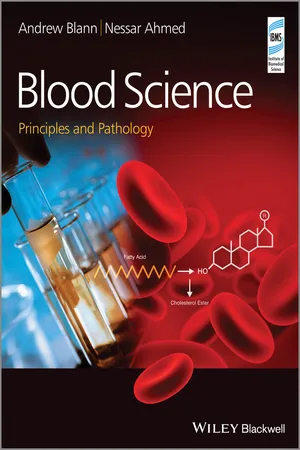Biological Sciences
Inherited Disorders
Inherited disorders are genetic conditions passed down from parents to their offspring. These disorders are caused by abnormalities in the DNA and can result in a wide range of health issues, including physical and developmental disabilities. Inherited disorders can be inherited through dominant, recessive, or X-linked inheritance patterns.
Written by Perlego with AI-assistance
Related key terms
3 Key excerpts on "Inherited Disorders"
- eBook - ePub
- Lyle Armstrong(Author)
- 2020(Publication Date)
- Garland Science(Publisher)
Chapter FourteenEpigenetic Predisposition to Disease and Imprinting-Based Disorders
14.1 PREDISPOSITION TO DISEASE 14.2 IMPRINTING-BASED DISORDERS 14.3 EPIGENETICS OF MAJOR DISEASE GROUPS 14.4 EPIGENETICS OF KIDNEY DISEASE 14.5 EPIGENETICS OF DIABETESFrom the preceding chapters we can appreciate that epigenetic control of gene expression is a versatile mechanism by which the information content of the genome can be used in a selective manner to define cellular phenotypes and respond to the environmental influences that cells experience during their lives. Similarly, by now it should also be apparent that perturbations in this mechanism could lead to changes in cell function that, if they are of sufficient magnitude or persist over a long enough timeframe, could alter the function of whole organ systems in a manner that we would recognize as a diseased state. The basis of many complex diseases is a form of such internal dysregulation.The word “disease” covers many problems that afflict the body, but in general we use it to describe conditions that cause disruption of the body’s normal functions. Illness and sickness are often synonymous terms, although the latter can often be used to describe the temporary means employed by the body in an attempt to rid itself of more serious dysfunction-causing agents. Examples of this could be the vomiting induced by the ingestion of noxious substances, or inflammation in response to infection by certain pathogenic organisms. These are not considered to be diseases in their own right, although they do cause some departure of the body from its apparently normal functions. In any case, the timescale of these processes is probably too short to influence all but the most transitory of epigenetic changes, so we will not consider them further in this chapter. - Ronald T. Brown(Author)
- 2003(Publication Date)
- Routledge(Publisher)
PART IV: Developmental Disorders and Conditions
Passage contains an image
20 Genetic Disorders in Children
LeAdelle PhelpsState University of New York at BuffaloOVERVIEW
More than 200 genes have been identified as causing hereditary diseases; new genes are isolated at a rate of 1 per month (Singer & Berg, 1997; Thompson, Hellack, Braver, & Durica, 1997). Some childhood disorders originate solely from prenatal or postnatal environmental events (e.g., deaf-blindness in the offspring caused by the pregnant mother contracting rubella, exposure to toxic chemicals such as PCBs [polychlorinated biphenyls], or sustainment of a traumatic head injury) but many are clearly related to a defective gene transmitted through the generations (e.g., albinism, hemophilia, sickle cell anemia, Tay-Sachs). Still other conditions appear to result from genetic susceptibility coupled with prenatal or postnatal stressors (e.g., stuttering, Giles de la Tourette’s syndrome). To facilitate an understanding of genetic conveyance, principles of hereditary transmission are presented and illustrated. A glossary is provided at the end of the chapter to facilitate an understanding of common genetic terms.There are 23 pairs of human chromosomes; 22 are autosomes (non-sex related) and the 23rd pair determines sex (XX for female, XY for male). All of the chromosomes, with the exception of the male-determining Y, contain thousands of genes that are the basic units of heredity. Each gene consists of chemicals called nucleotides, which are designated by the letters A (adenine), C (cytosine), G (guanine), and T (thymine). The sequence of these nucleotides determines which specific protein is produced. Initial changes in the normal sequence of the nucleotides occur through sudden spontaneous mutations. The outcomes may be deletions, alterations, or faulty repetitions of the A, C, G, and T sequence, thus modifying the intended protein. This transformed protein causes the appearance of clustered symptoms that define a specific disorder or syndrome.- eBook - ePub
Blood Science
Principles and Pathology
- Andrew Blann, Nessar Ahmed(Authors)
- 2014(Publication Date)
- Wiley-Blackwell(Publisher)
20 Inherited Metabolic DisordersLearning Objectives
After studying this chapter, you should be able to:- outline the modes of inheritance for metabolic disorders;
- list the consequences of an enzyme deficiency and how this gives rise to an inherited metabolic disorder (IMD);
- describe examples of key IMDs encountered in clinical practice;
- discuss the laboratory investigation of IMDs;
- explain the value of antenatal diagnosis and prenatal screening.
Markers that enable us to detect IMDs (but often referred to as inborn errors of metabolism) are crucial because many of these conditions are due to a genetic defect and present in childhood and have lifelong consequences. Although individually rare, IMDs together may be present in up to 1 in 1000 live births, and over 4000 single gene defects have been identified. However, these figures mask enormous variability in frequency, severity (ranging from benign to fatal) and the particular metabolic pathway(s) involved.In this chapter, we will first remind ourselves, in Section 20.1, of the genetics of inheritance, most of which operate at the level of the chromosome. Section 20.2 will follow with details of how these operate at the biochemical level, and Section 20.3 on the IMDs of organelles. These sections will also look at specific abnormalities. In the penultimate Section 20.4 we look at which of these IMDs are the object of screening processes, and the chapter concludes with case studies in Section 20.5.20.1 The Genetics of Inheritance
By definition, all disorders must have arisen from a faulty gene or genes from one or both parents. Several different forms of this are recognized, based on which gene carries the particular abnormality.- Autosomal recessive inheritance
Learn about this page
Index pages curate the most relevant extracts from our library of academic textbooks. They’ve been created using an in-house natural language model (NLM), each adding context and meaning to key research topics.


